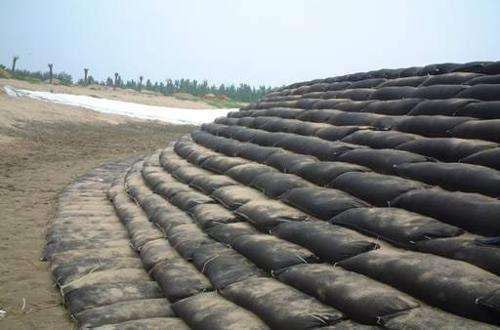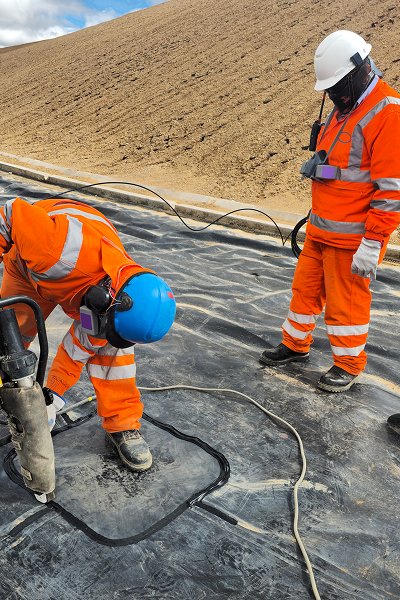Basic structure of geobags
From a structural point of view, geobags are mainly composed of three parts: fabric bag body + suture process + filler:
Bag material (fabric): This is the main component of geobags. Its material determines the core indicators of the bag, such as strength, durability, UV resistance, and corrosion resistance.
Suture and interface technology: Geobags are usually sealed by suture or hot melt. The quality of sutures and suture methods determine whether the bag will crack or break during filling and use.
Filling materials: Common fillers include sand, stone, mud, concrete, vegetation matrix, etc., and their selection varies according to the purpose of the project (reinforcement, slope protection, ecological greening, anti-seepage, etc.).


Classification by material composition
Polypropylene geobag (PP): cost-effective, excellent strength, corrosion resistance, lightweight;
Polyester geobag (PET): high temperature resistance, strong anti-aging performance;
Polyethylene geobag (PE): good flexibility, good UV resistance;
Biodegradable geobag: mainly used in ecological engineering and sustainable projects, more environmentally friendly.
Polypropylene (PP)
Performance characteristics:
Low density (about 0.91g/cm³), light weight;
High tensile strength, moderate elongation at break;
Excellent corrosion resistance, resistant to acids, alkalis and most organic solvents;
Moderate UV resistance, which can be enhanced by adding UV stabilizers;
Extremely low water absorption, not easy to mold.
Scope of application:
Bank protection and dams in water conservancy projects;
Temporary or semi-permanent reinforcement structures;
Ecological greening projects.
Polyester (PET)
Performance characteristics:
High tensile strength, better stability than PP;
Good heat resistance, strong thermal stability (melting point about 260℃);
Excellent resistance to UV, aging and hydrolysis;
Some high-performance PET materials have good rigidity and elasticity.
Scope of application:
Seawall, port engineering;
Anti-scouring of underwater structures;
High temperature, high humidity or strong UV environment.
Slope management: highway slope stability and greening
Project background: The highway passes through the mountain, the slope is steep, and landslides and vegetation loss are prone to occur in the rainy season.
Application method:
Use ecological geotextile bags that can be implanted with grass seeds for staggered laying;
Fill the soil bags with mixed nutrient soil and grass seeds to form a plant buffer zone.
Project results:
Enhance slope stability and prevent rainwater erosion;
Achieve more than 80% green coverage within two months;
Improve the overall landscape effect and meet environmental protection construction standards.

Coastal restoration project
Project background: The coast is severely eroded by typhoons and tides, resulting in the retreat of the embankment and the destruction of the ecosystem.
Application method:
Use high-strength PET+PP composite geobags to build an "ecological buffer embankment";
Fill the soil bag with sand, and the outer layer is supplemented with permeable fabric to promote biological attachment.
Project results:
Effective energy absorption and wave reduction, resisting wind and waves above level 5;
Six months after completion, algae and shellfish attached to the surface of the geobag, and the ecological function was initially restored;
The bag has good stability, and no structural damage has been found within five years.




